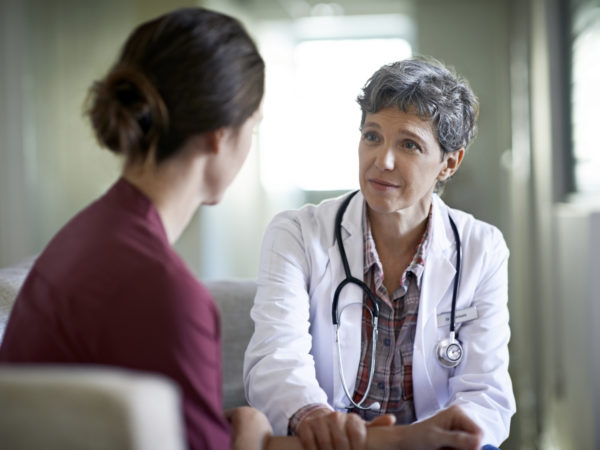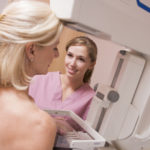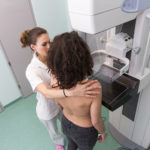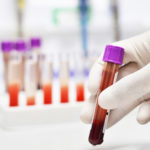Ovarian Cancer

What is ovarian cancer?
Ovarian cancer is uncontrolled grown of aberrant cells in the ovaries. Like most cancers, ovarian cancer is staged on the basis of how far it has spread from the site where it originates.
Stage I: The cancer has not spread beyond the ovaries.
Stage II: The cancer has spread to the uterus, fallopian tubes, bladder, sigmoid colon, rectum or other pelvic organs.
Stage III: The cancer has spread beyond the pelvis to the lining of the abdomen and/or to lymph nodes.
Stage IV: The disease has spread to distant organs such as the liver or the lungs.
If caught at its earliest stage, 90 percent of all cases of ovarian cancer can be cured. Unfortunately, most cases are not found until much later because the disease causes no specific symptoms in its early stages. About one woman in 57 in the United States will develop this disease in her lifetime. Most of those affected are over 50. Women with a family history of the disease are at high risk as are women who have not had children (the more children a woman has had, the lower her risk), and those who have already had breast or colon cancer.
What are the risk factors?
Taking fertility drugs during childbearing years or hormone replacement therapy after menopause may slightly increase a woman’s risk, and some studies suggest that using talc on the genital area for many years presents an increased risk. Ovarian cancer is the fifth most common cancer in our society and causes more deaths than any other cancer of the female reproductive system.
Women who have a family history of breast and ovarian cancer may increase their own risks if they smoke, according to results of a study published in the April 2001 issue of Cancer Epidemiology Biomarkers & Prevention.
What are the symptoms?
Because ovarian cancer does not cause obvious early warning signs, women should always check out the following persistent symptoms, trivial though some may seem:
- General abdominal discomfort and/or pain (gas, indigestion, pressure, swelling, bloating, cramps).
- Nausea, diarrhea, constipation, or frequent urination.
- Loss of appetite.
- Feeling of fullness even after a light meal or abdominal swelling.
- Weight gain or loss with no known reason.
- Abnormal bleeding from the vagina.
- Pelvic pressure (a feeling that one needs to urinate or defecate all the time). Constant back or leg pain.
A pelvic exam and a sonogram can determine whether the ovaries require further evaluation. A blood test called CA-125 used to monitor whether ovarian tumors have responded to chemotherapy by measuring a tumor marker protein in the blood has been widely promoted for ovarian cancer screening. It is not a perfect screening tool, however, because not all women with ovarian cancer have elevated CA-125 levels and because in some healthy women, the levels can be elevated for reasons unrelated to cancer.
What is the conventional treatment?
Treatment usually begins with surgery to remove the ovaries, uterus, fallopian tubes, and cervix. Often the lymph nodes in the abdomen are also removed. This will be followed by radiation or chemotherapy or both depending upon the stage at which the cancer was diagnosed.
It is worth noting that long-term use of birth control pills protects against ovarian cancer.
What therapies does Dr. Weil recommend for ovarian cancer?
Results of an Australian study published in the Aug. 20, 2003, issue of the International Journal of Cancer suggest that women whose diets were high in vegetables before they developed ovarian cancer lived longer after treatment than those whose diets did not contain as many vegetables. The research team asked 609 women treated for invasive epithelial ovarian cancer (the most common type of the disease) about their intake of 119 foods during the year before they were diagnosed. They found that the 45 percent who lived five years or longer after diagnosis were those who ate the most vegetables (excluding potatoes). Women who ate cruciferous vegetables such as broccoli, cabbage and cauliflower survived longer, as did those whose diets additionally contained high levels of vitamin E (vitamin E supplements did not appear to help).
The researchers also found that eating dairy products had a negative effect. Women whose intake of lactose, calcium and dairy products was highest had about a 30-percent greater risk of dying early than those who ate the least of these foods.
Any study based on recall of eating habits is weak, and the results of this study will have to be confirmed by further research to be sure that eating vegetables prolongs survival and that consuming dairy foods compromises longer-term survival. But I would not wait for those results to increase your intake of vegetables. There already is ample evidence to suggest that eating five or more daily servings of vegetables and fruit benefits your health and lowers the risk of several types of cancer.









